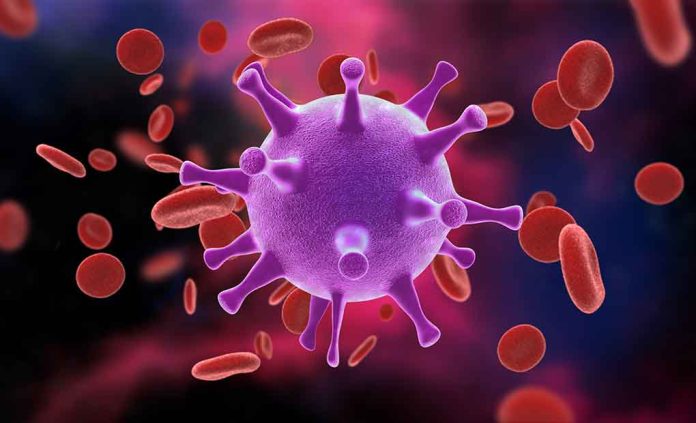
Healthcare workers who wash their uniforms at home may unknowingly be spreading dangerous antibiotic-resistant bacteria throughout their homes and back into hospitals, according to alarming new research.
Key Takeaways
- Domestic washing machines often fail to eliminate harmful bacteria from healthcare uniforms, even at temperatures of 140°F.
- Superbugs infect over two million people and cause at least 23,000 deaths annually in the U.S.
- Home laundering of healthcare textiles may create a hub for antibiotic-resistant bacteria to spread in both community and hospital settings.
- Experts recommend standardized in-house laundering at healthcare facilities or using industrial laundries for better infection control.
- C. difficile infections alone cost U.S. hospitals $9.8 billion annually, highlighting the economic impact of superbug spread.
The Hidden Dangers in Your Laundry Basket
The rise of antibiotic-resistant bacteria, commonly known as “superbugs,” presents a growing threat to public health, particularly in healthcare settings. These dangerous pathogens, including methicillin-resistant Staphylococcus aureus (MRSA) and Clostridium difficile (C. diff), have developed resistance to common antibiotics, making infections increasingly difficult to treat. While hospitals implement rigorous cleaning protocols within their facilities, a significant oversight may be occurring: the laundering of healthcare worker uniforms at home.
The problem stems from the fundamental differences between industrial and home laundering processes. Home washing machines typically operate at lower temperatures and use less effective detergents than their industrial counterparts. Even when set to 140°F, studies show that domestic washing machines often fail to fully disinfect textiles, allowing antibiotic-resistant bacteria to survive the wash cycle and potentially spread to other items in the load.
How Superbugs Survive and Spread
Superbugs represent a class of microorganisms that have developed resistance to multiple antibiotics. This resistance occurs naturally through genetic mutations but accelerates when antibiotics are overused or misused. Once confined mainly to healthcare settings, these dangerous pathogens are increasingly found in community environments, affecting even otherwise healthy individuals. The healthcare uniform laundered at home may be creating an unexpected bridge between hospital and community settings.
The economic impact of superbug infections is staggering. C. diff infections alone cost U.S. hospitals approximately $9.8 billion annually. Meanwhile, over two million Americans are infected with antibiotic-resistant bacteria each year, resulting in at least 23,000 deaths. These numbers highlight the urgent need for comprehensive infection control strategies that address all potential transmission routes, including textile processing.
Solutions to Combat the Laundry Superbug Crisis
Experts are now calling for significant changes to how healthcare uniforms are laundered. “Implementing standardized in-house laundering within healthcare facilities or using external industrial laundries will enhance infection control measures,” recommends Professor Laird. This approach would ensure that uniforms undergo the high-temperature washing and specialized detergent treatments needed to effectively eliminate dangerous pathogens before they can spread.
For healthcare facilities unable to implement on-site laundering, partnerships with industrial laundry services offer an effective alternative. These specialized services employ validated processes designed specifically to decontaminate healthcare textiles. Meanwhile, healthcare workers who must launder uniforms at home should follow strict guidelines, including using the highest temperature settings tolerated by the fabrics, separate loads for uniforms, and appropriate disinfectant detergents.
Sources:
Superbugs In Hospitals: Superbug Definition And Prevention Approaches
Why your laundry could be making you sick and what to do about it







